SPONSORING – COMPETING PRIORITIES
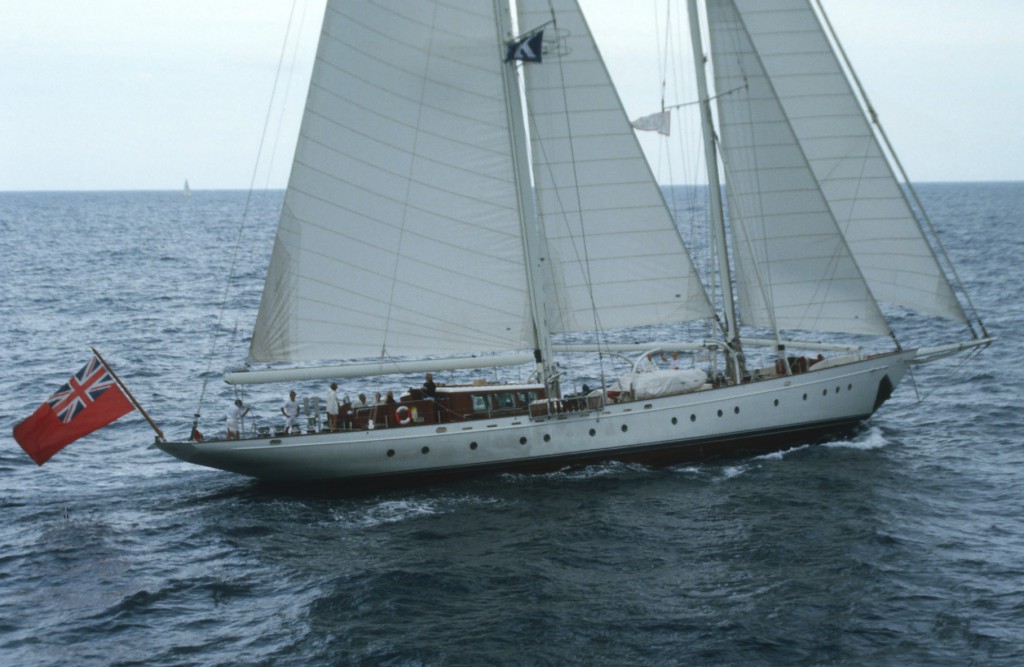 The pearl of marketing re-examined in the context of windvane steering systems.
The pearl of marketing re-examined in the context of windvane steering systems.
I made my confession on 28 December 2008 on the German YachtForum board: Laura Dekker was not a familiar name at the time, just a girl who came to see me in Hamburg looking to buy a windvane steering system – and ended up being given one instead.
We all know the score: when it comes to raising children, internet forum regulars have all the answers. That they all have different answers seems not to matter – all at once everyone simply knows they are the perfect parent! Anyway, just like that I found I had mutated – in the eyes of one outraged forumite at least – into a “calculating sponsor” with eyes only for the fortune I stood to make. I was puzzled: did people really think I should have insisted on being paid? What a contorted idea! But then again the whole notion of sponsorship in our sport is rather shaky…
First a few home truths about advertising and sponsorship. Opinions may vary, of course, but I think it is worth highlighting these issues just to illustrate the extent of the wealth to be accumulated through sponsorship in a niche sport like sailing. Sponsors are as much a fact of modern life as the sun, the moon and the stars. Living as we do in a world suffused with elegant marketing ruses, we have it in our head that what sponsors pay, we don’t have to and we find the whole notion thoroughly reassuring. We understand by and large that companies do not engage in sponsorship out of sheer benevolence, still their backing for initiatives and events undoubtedly creates a positive vibe.
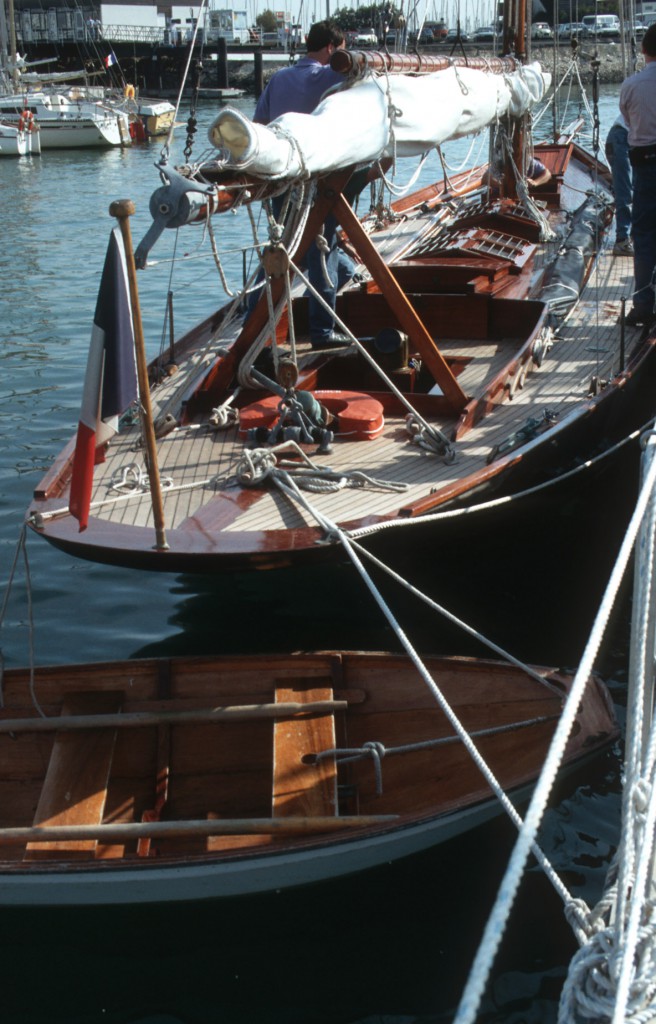 The subtler and more delicate a sponsor’s approach, the less likely it is to awaken public suspicion. The neater the fit between sponsor, beneficiary and/or event, the more golden the glow generated – and the smaller the probability that anyone at the bottom end of the food chain will start to wonder who actually picks up the bill.
The subtler and more delicate a sponsor’s approach, the less likely it is to awaken public suspicion. The neater the fit between sponsor, beneficiary and/or event, the more golden the glow generated – and the smaller the probability that anyone at the bottom end of the food chain will start to wonder who actually picks up the bill.
When a well-known carmaker lays on a shuttle service to ferry hotshot sailors from boat to party and back again smoothly during their annual visit to Kiel, for example, the costs for coach and coachman are ‘socialised’: everyone who purchases one of well-known carmaker’s vehicles pays a share of the cost – without ever suspecting a thing! Along the way the brand gains plenty of positive exposure among public and media alike and stealthily merges its identity with that of sailing. And the association of automobiles and yachting, as everyone knows, unleashes waterfalls of testosterone that leave us powerless to resist. At least I believe that’s how it’s supposed to work. Advertising execs are smart folk – many of them sail too…
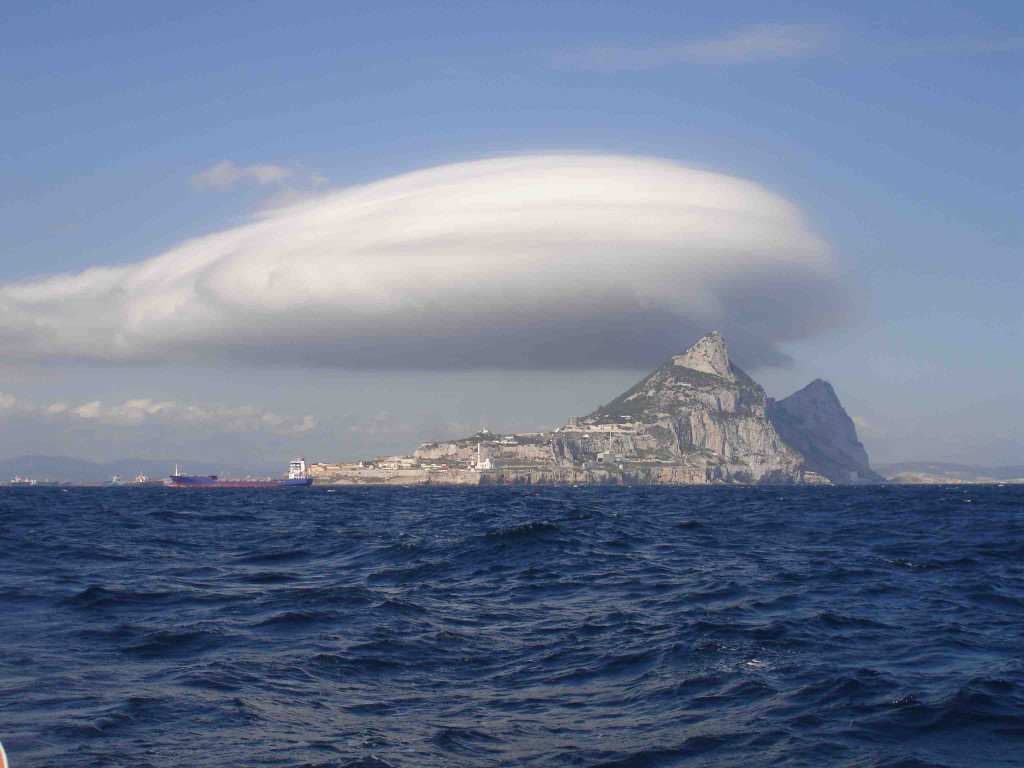 Cutting a little closer to the bone, consider the example of the bank specialising in shipping finance (apparently banks have no sense of irony) that, having already lost face and parted taxpayers from a handsome sum, decides in the name of those selfsame taxpayers (albeit we, unlike our elected representatives, have no influence whatsoever in its decisions) to sponsor the same nautical event. An institution propped up by our taxes uses money contributed by us to try and set that testosterone flowing in the hope we’ll then dip into our pocket for a third time and help lift it a little further out of the mire into which it has sunk. It couldn’t work without the sheen of respectability afforded by sponsorship.
Cutting a little closer to the bone, consider the example of the bank specialising in shipping finance (apparently banks have no sense of irony) that, having already lost face and parted taxpayers from a handsome sum, decides in the name of those selfsame taxpayers (albeit we, unlike our elected representatives, have no influence whatsoever in its decisions) to sponsor the same nautical event. An institution propped up by our taxes uses money contributed by us to try and set that testosterone flowing in the hope we’ll then dip into our pocket for a third time and help lift it a little further out of the mire into which it has sunk. It couldn’t work without the sheen of respectability afforded by sponsorship.
Ultimately there is no escaping the fact that any form of plugging is paid for by the customer. Assuming the process is handled with discretion, of course, the customer hardly notices, but marketing and advertising write their own rules and it seems a pretty safe bet that, whatever the product, the price you pay includes the costs of its promotion. Manufacturers’ efforts first to catch our eye and then convert our interest into money on the counter add between €640 and €4,000 on average to the price of every new car from one of the familiar German marques – and we are talking here about mass-produced items.
The costs for advertising, boat shows, marketing and so on incorporated into the prices we pay to turn our sailing dreams into reality must be astronomic by comparison on a per-boat basis. Can I even say that here or is it just too painful to mention?
 Sponsorship as a magic formula was conceived by strategists to kill a whole flock of important birds with a single stone, to defray the costs of the “show” in small amounts across innumerable consumers of the sponsor’s products in pursuit of the relevant commercial Greater Good. The smart weapon of marketing professionals, it really is advertising in disguise: we barely notice the cleverly positioned brand logo, but it nestles itself into a cosy corner somewhere up inside our brain and suddenly we can’t even begin to think about some of the prestigious offshore races without instantly being reminded of a certain rather expensive Swiss watch. And with the right media exposure – the media plays a critical role in conveying the message effectively to its target audience – that single well placed logo can reach untold numbers of people, improving the marketing economics with every new pair of eyes it passes.
Sponsorship as a magic formula was conceived by strategists to kill a whole flock of important birds with a single stone, to defray the costs of the “show” in small amounts across innumerable consumers of the sponsor’s products in pursuit of the relevant commercial Greater Good. The smart weapon of marketing professionals, it really is advertising in disguise: we barely notice the cleverly positioned brand logo, but it nestles itself into a cosy corner somewhere up inside our brain and suddenly we can’t even begin to think about some of the prestigious offshore races without instantly being reminded of a certain rather expensive Swiss watch. And with the right media exposure – the media plays a critical role in conveying the message effectively to its target audience – that single well placed logo can reach untold numbers of people, improving the marketing economics with every new pair of eyes it passes.
Sponsorship largely remains the preserve of big companies keen to exploit its direct emotional appeal in their constant search for a stronger and more distinctive profile, but humanitarian objectives, environmental protection, big boys’ toys, a round-the-world race and even perfectly ordinary sporting events can be packaged up in a form that creates financial value enough for all. Sponsoring can be quite a gamble too. Large sums of money are put on the line with no way of predicting the return in advance: the mechanism only works if the masses hand over their heard-earned for the right cause, the right beer and the right phone, if they embrace the opportunity to release their inner dynamic athlete and order that Global Race Special Edition car (to spend sweaty hours in stationary traffic dreaming of the ocean), if they drink the right energy drink and feel the hand of Schumacher in their driving (he’s the one with the red hat and the airline, right – or am I thinking of someone else?).
Sponsorship relies on an alliance between the sponsor, the beneficiary, the media that bring the event to the public’s attention and the customers who willingly – or at least unwittingly – stump up the funds. So when a well-known energy drink brand decides to sponsor Driver X, he reaps millions, the proprietor gets a new aeroplane, ordinary drivers park themselves in front of the TV and the ‘right’ kind of blue can carries a rather hefty price tag (but there is after all a world champion in every one).
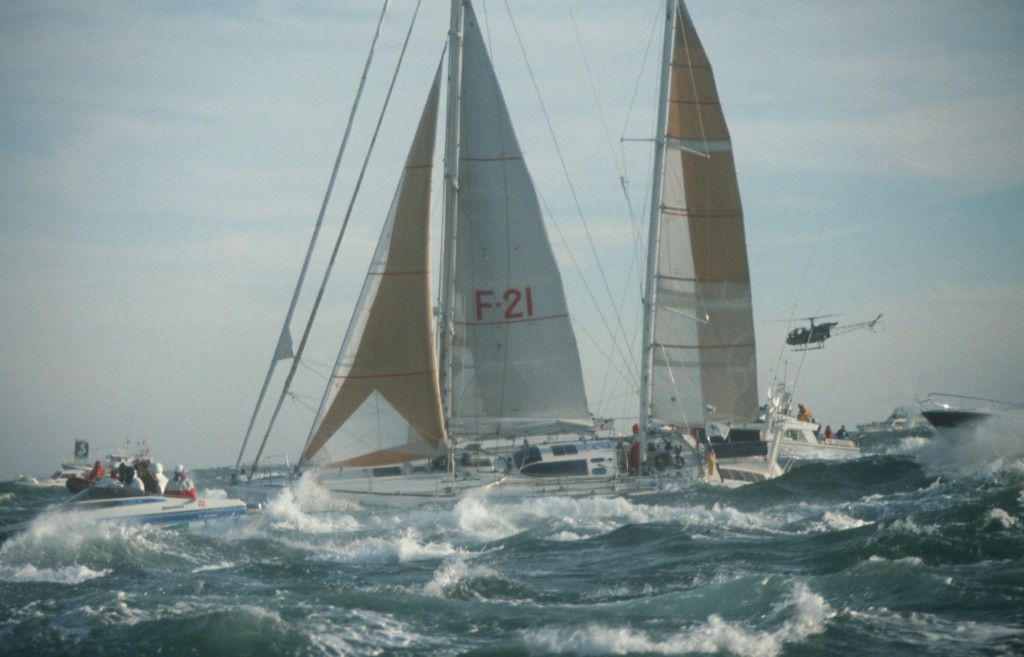 It’s a sterling deal, but the figures only add up in the context of cars, football, fashion, the world of the wealthy, the beautiful and the nipped and tucked – in short, wherever ordinary people stand in line for a chance to bask in the reflected glory of the celebrities of the day (albeit the reflection comes from the TV and most of the basking is done from the comfort of the couch). The world of sailing appears unpromising by comparison: with no ball to kick, no stadium to sit in and no prospect of really becoming a sport of the people, our sport does not lend itself to mobilizing the masses.
It’s a sterling deal, but the figures only add up in the context of cars, football, fashion, the world of the wealthy, the beautiful and the nipped and tucked – in short, wherever ordinary people stand in line for a chance to bask in the reflected glory of the celebrities of the day (albeit the reflection comes from the TV and most of the basking is done from the comfort of the couch). The world of sailing appears unpromising by comparison: with no ball to kick, no stadium to sit in and no prospect of really becoming a sport of the people, our sport does not lend itself to mobilizing the masses.
The exception is France, where heroes returning from the Vendée Globe can look forward to a parade along the Champs-Élysées. Even foreign competitors command public attention and respect in France, an almost inconceivable scenario elsewhere. The broad-based popularity of sailing in France provides sufficient oil to keep the wheels of serious sponsorship turning. Prominent backers include regional banks, food producers, newspapers, insurers, breweries – all the types of company that can build a sponsorship budget out of minor contributions from millions of customers happy to see ‘their’ brand in pole position on screen, billboards and the printed page. We should be so lucky!
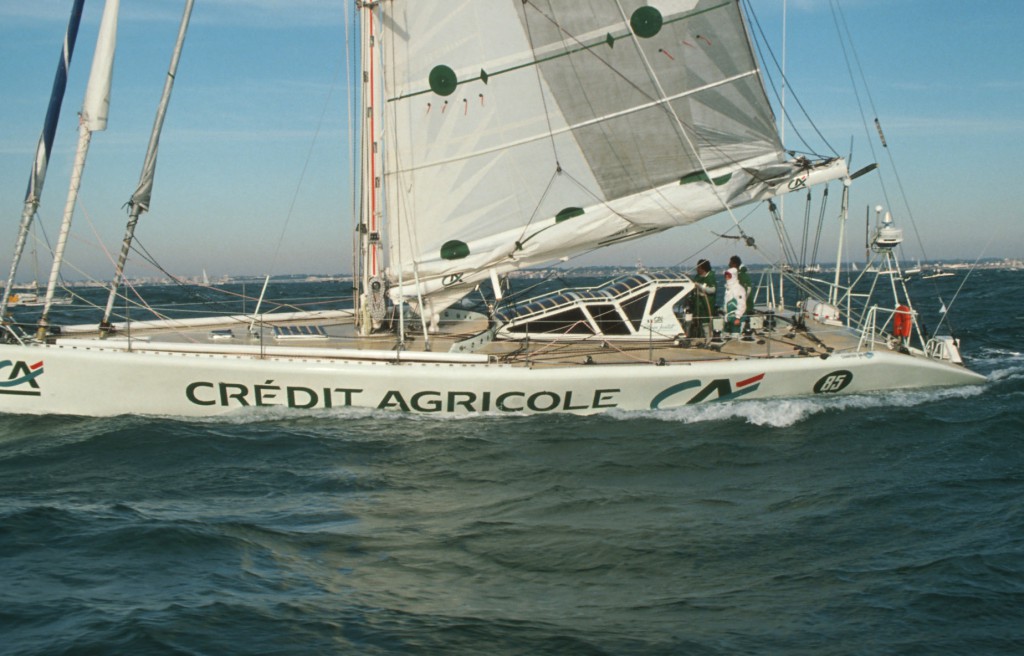 The French way gives ace sailors the perfect opportunity to enjoy the best in equipment and resources while also helping their own star shine a little brighter. However sponsorship inevitably also adds to the pressure on the heroes of the great races: sponsors are a whip that drives boats and crews to their limits and at times perhaps beyond. Sponsorship on this scale is most definitely business first: agents, lawyers and the like gather to define rights and obligations in painstaking detail to minimise collateral damage on all sides in the event of failure and ensure there are no long faces at the end. The sums involved are significant – too significant for anything but the most formal legal arrangements. Apparently it is not unheard of for ownership of a boat to be transferred to its skipper bit by bit as each stage of the race is successfully completed (assuming, of course, that neither runs out of strength, nerve or luck along the way).
The French way gives ace sailors the perfect opportunity to enjoy the best in equipment and resources while also helping their own star shine a little brighter. However sponsorship inevitably also adds to the pressure on the heroes of the great races: sponsors are a whip that drives boats and crews to their limits and at times perhaps beyond. Sponsorship on this scale is most definitely business first: agents, lawyers and the like gather to define rights and obligations in painstaking detail to minimise collateral damage on all sides in the event of failure and ensure there are no long faces at the end. The sums involved are significant – too significant for anything but the most formal legal arrangements. Apparently it is not unheard of for ownership of a boat to be transferred to its skipper bit by bit as each stage of the race is successfully completed (assuming, of course, that neither runs out of strength, nerve or luck along the way).
The infinitely more modest proposals of typical amateur sailors seeking sponsorship simply to make their own life afloat a little easier seem almost touching by comparison. The prospects of reaching an audience of any real size in print and on TV elsewhere in the world are poor – after all sailing is at best the preserve of the inside pages and late broadcast slots – and the proposition for sponsors is correspondingly less attractive. When companies do decide to try their luck with our sport and attempt to generate publicity and excite the masses through sailing, they have to accept that in this arena, success cannot be guaranteed in advance. Perhaps not surprisingly, the sponsorship that does flow into sailing tends to be targeted at higher level racing events where national pride is on the line. There is just no more reliable way to secure the emotional involvement of consumers.
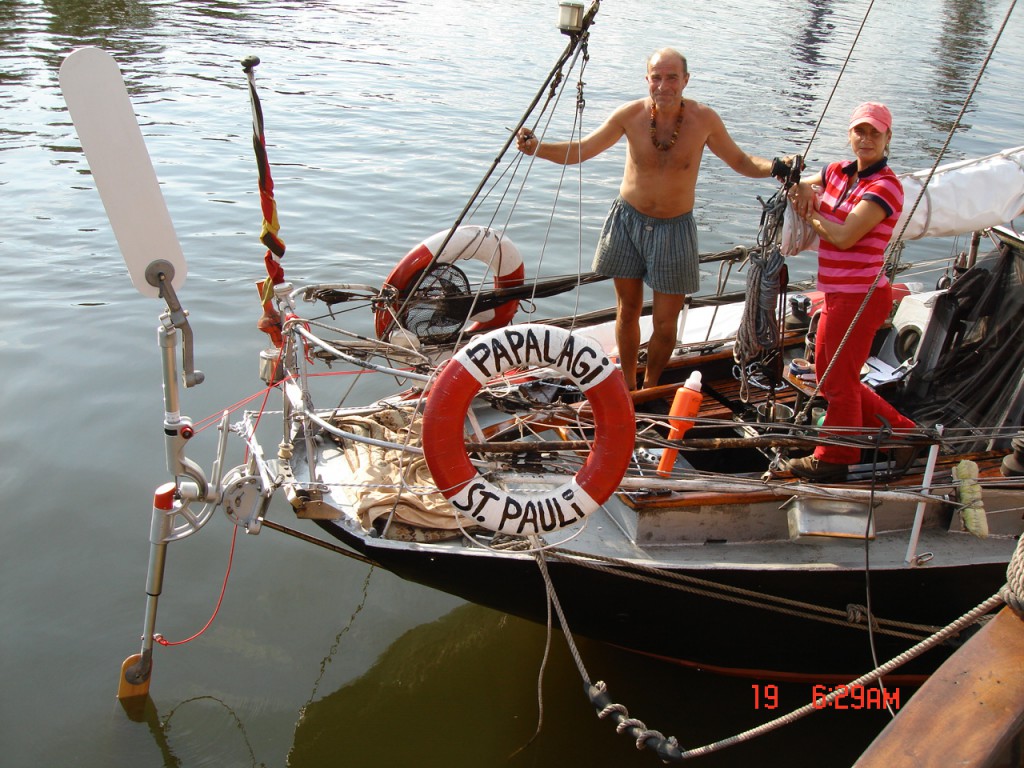 Sponsoring in the context of long-distance cruising, in contrast, usually amounts to nothing more glamorous than a simple exchange, a touchingly naïve arrangement ordinarily framed in the simplest of terms: you give me a blanket or a windvane steering system and I’ll tell everyone that I sleep well when George is driving. Not infrequently, however, competing priorities take over and fairness falls by the wayside to be replaced with promises of “media attention”, a scarcely measurable commodity at the best of times and one the party doing the promising may well – aside from a few courteous mentions in the ship’s own blog – have no concrete means to deliver. Not everyone views their word as their bond either and assurances given on shore can quickly fade once the voyage is under way.
Sponsoring in the context of long-distance cruising, in contrast, usually amounts to nothing more glamorous than a simple exchange, a touchingly naïve arrangement ordinarily framed in the simplest of terms: you give me a blanket or a windvane steering system and I’ll tell everyone that I sleep well when George is driving. Not infrequently, however, competing priorities take over and fairness falls by the wayside to be replaced with promises of “media attention”, a scarcely measurable commodity at the best of times and one the party doing the promising may well – aside from a few courteous mentions in the ship’s own blog – have no concrete means to deliver. Not everyone views their word as their bond either and assurances given on shore can quickly fade once the voyage is under way.
When an author approached me 35 years ago to ask if I would like to sponsor his ‘rugged’ self-built yacht by supplying one of my Atlantik auxiliary rudders, my response was no and no: not only was I less than enthusiastic about giving away products for free, but I also felt the boat concerned was too heavy for my system at the time. In the end the author bought my unit anyway (for what his subsequent book described as obvious reasons) and I had the dubious pleasure of reading about how it had been steadily optimised until, by the end of the voyage, it had actually been made to work. Imagine that as the payback on a sponsorship deal!
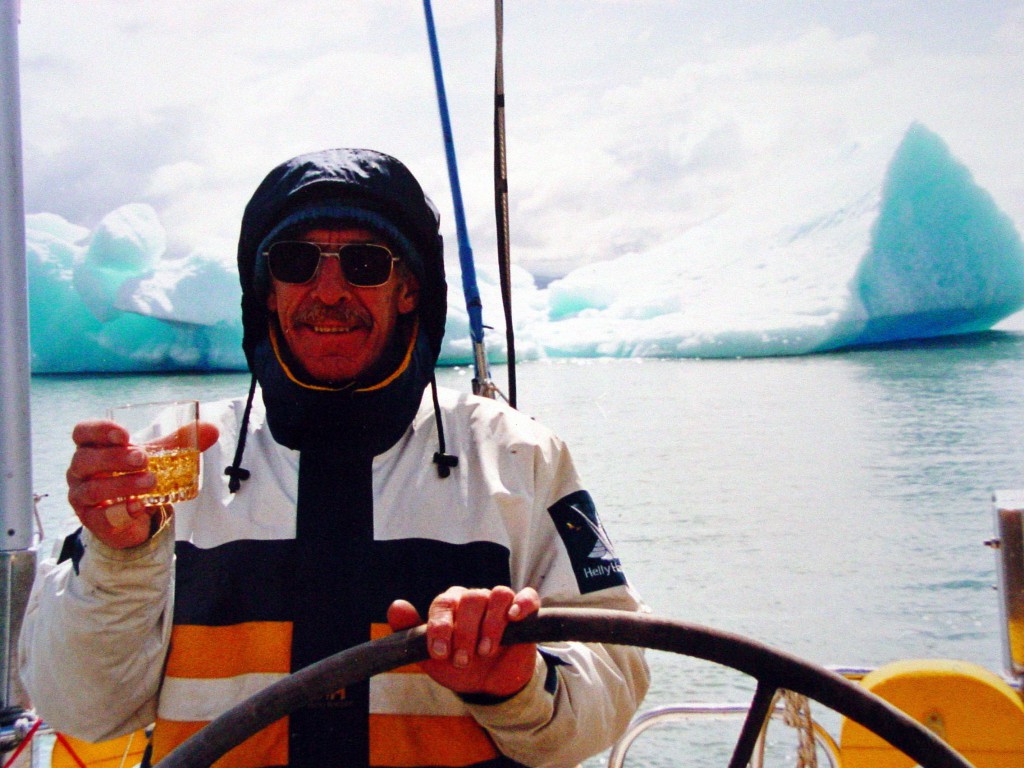 I had a similar experience with another well-known individual who was dead set on completing the Northwest Passage (he did it too, only on foot, as his boat became stuck in the ice). Here too I declined to sponsor and instead sold the skipper one of my systems, which was promptly installed wrongly and then operated equally badly. It never stood a chance – and the photo that proved it appeared on the front of German sailing magazine YACHT. The slick aluminium yacht concerned subsequently had a stainless steel windvane system fitted in California. As a sponsorship move this was undoubtedly a red-letter day for my fellow windvane purveyor in the US, but months later YACHT magazine published a report in which the individual concerned outlined the various improvements he had had to make to get the (by no means unproven) new system working properly. The boat itself is still sailing, although it passed many years ago to a new owner who reports on his comparison of autopilot and windvane systems in the current edition of YACHT.
I had a similar experience with another well-known individual who was dead set on completing the Northwest Passage (he did it too, only on foot, as his boat became stuck in the ice). Here too I declined to sponsor and instead sold the skipper one of my systems, which was promptly installed wrongly and then operated equally badly. It never stood a chance – and the photo that proved it appeared on the front of German sailing magazine YACHT. The slick aluminium yacht concerned subsequently had a stainless steel windvane system fitted in California. As a sponsorship move this was undoubtedly a red-letter day for my fellow windvane purveyor in the US, but months later YACHT magazine published a report in which the individual concerned outlined the various improvements he had had to make to get the (by no means unproven) new system working properly. The boat itself is still sailing, although it passed many years ago to a new owner who reports on his comparison of autopilot and windvane systems in the current edition of YACHT.
Approached in early 2009 about the possibility of sponsorship for a double circumnavigation project, I went to see the man involved, viewed the boat, whose previous owner I knew, explained my concerns to the new owner, whom I also knew, and offered to sell him one of my systems instead. The outcome this time is a matter of record too: the owner passed up my offer, but I can’t say I was disappointed, as the system he fitted instead ended up being implicated twice over in the failure of his record attempt. Not exactly music to the ears of a sponsor, especially since the facts of the matter tell a rather different story.
Last week it was the turn of a young and attractive Finnish lady, the author of a lively blog adorned with copious bikini shots, who had fallen for a Spanish single-handed yachtsman at a party in Barcelona, moved into his bunk, suddenly considered herself a yachtswomen and – even more suddenly – decided it was time to sail around the world. The open and direct circular she sent out to all vanegear manufacturers proffering media attention and exciting blogs (and not forgetting to mention those photos) makes no secret of her criteria: “We have decided that saving money is important for us (especially now so close to departure!) and we will have to go for a brand that could offer us a greater discount.” I find her willingness to cut straight to the chase disarming: it’s all about the money. Honest, credible … but somewhat wide of the mark as a sponsorship proposal.
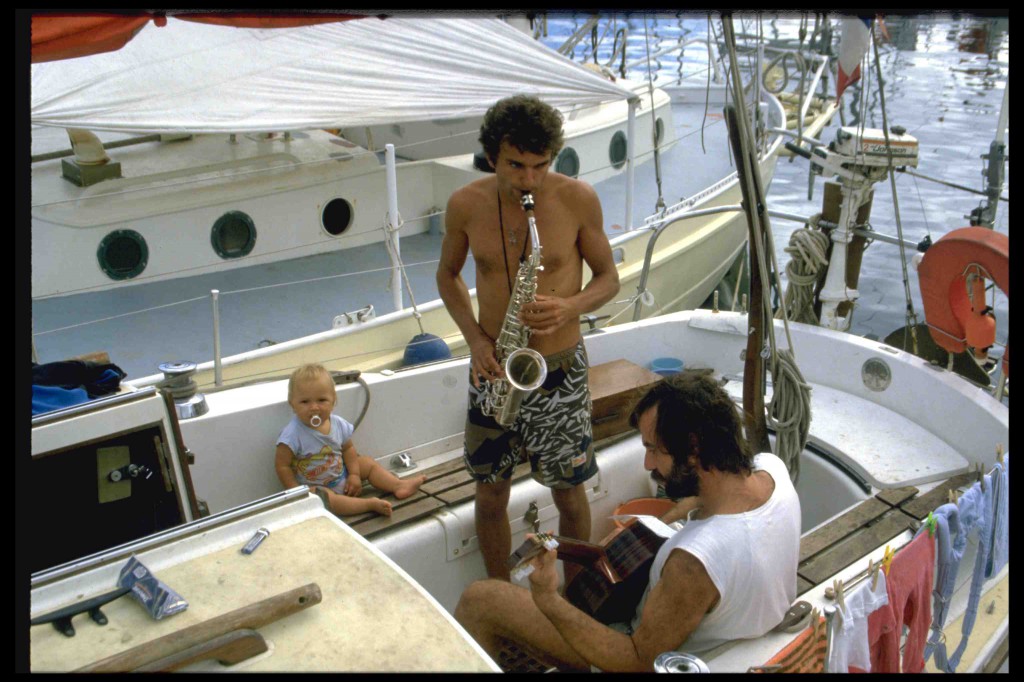 A pragmatist living in a small world, I still consider word-of-mouth to be a reliable marketing strategy. It might take a bit longer (almost a lifetime as it sometimes seems), but is dependable and – if you are prepared to leave time, effort and dedication out of the equation – favourably priced. Hence my regular response to solicitations of sponsorship, which are as much a part of my life as the ebb and the flood, remains that the best endorsement a product can have is that people are willing to pay for it: if “good no cheap, cheap no good”, then what of free? I have strayed from this path now and again though and have collected some amusing human interest stories for my trouble.
A pragmatist living in a small world, I still consider word-of-mouth to be a reliable marketing strategy. It might take a bit longer (almost a lifetime as it sometimes seems), but is dependable and – if you are prepared to leave time, effort and dedication out of the equation – favourably priced. Hence my regular response to solicitations of sponsorship, which are as much a part of my life as the ebb and the flood, remains that the best endorsement a product can have is that people are willing to pay for it: if “good no cheap, cheap no good”, then what of free? I have strayed from this path now and again though and have collected some amusing human interest stories for my trouble.
Once upon a time there was a melancholy singlehander who intended to set sail for New Zealand from the Baltic in October in a 7m yacht with no engine. He twice reached the Skaw at the Northern tip of Denmark before eventually thinking better of it, sailing home and selling his boat on eBay in time to fly down under for Christmas. My wife and I had become very fond of this man, a master carpenter, and are reminded of him every time we sit on the two beautiful and unique chairs of his own making that were left orphaned when he sold up and headed South.
Then there is the single man to whom we opened out hearts and gave a few days and nights of therapy who subsequently thought nothing of descending on us again unannounced with his girlfriend in tow. Good manners would suggest asking first, but apparently not to everyone. Had he asked first, we would certainly have declined in the circumstances. As it was, the visit lasted the brief but intense five minutes it took my wife to tell them how things stood and singlehandedly send them on their way. I could never have dealt with the situation so effectively, but fortunately I was out shopping for a bolt at the time and only found out about the whole business later by phone. The plain truth can be brutal, but at least it is the truth.
I am struck by just how few of the really prominent figures in the sailing world attempt to leverage their name for favours – at least in the vital matter of procuring a windvane steering system.
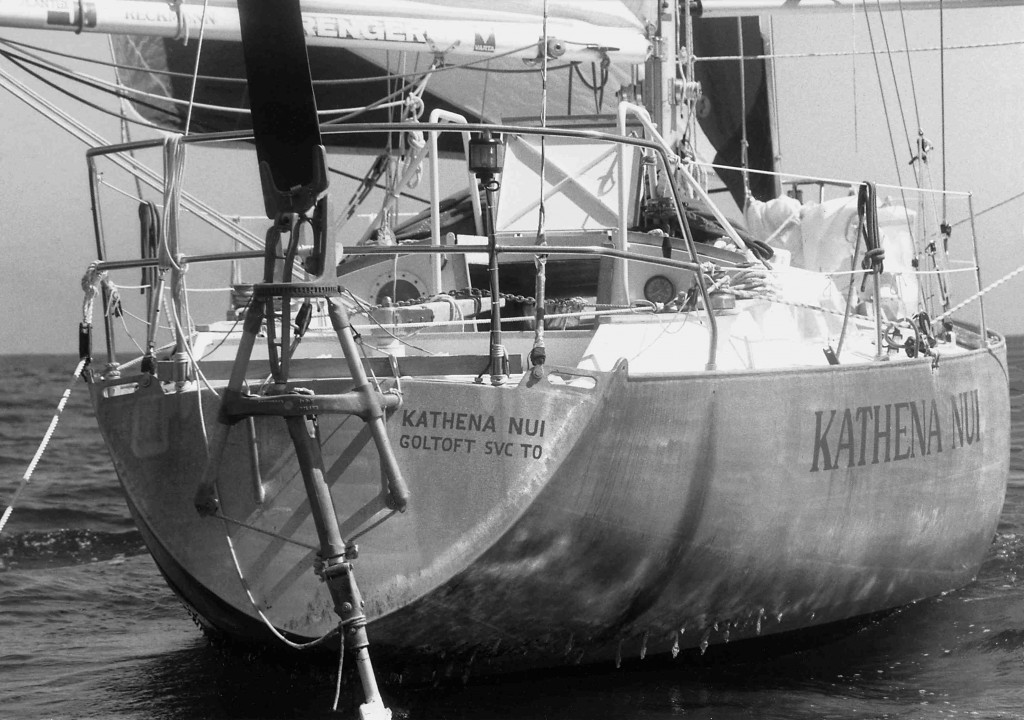 The first German to sail around the world singlehanded (who later also became the first German to complete a solo circumnavigation in both directions) used a vanegear borrowed from a robust Colin Archer design whose owner had found it superfluous after relocating to British Columbia.
The first German to sail around the world singlehanded (who later also became the first German to complete a solo circumnavigation in both directions) used a vanegear borrowed from a robust Colin Archer design whose owner had found it superfluous after relocating to British Columbia.
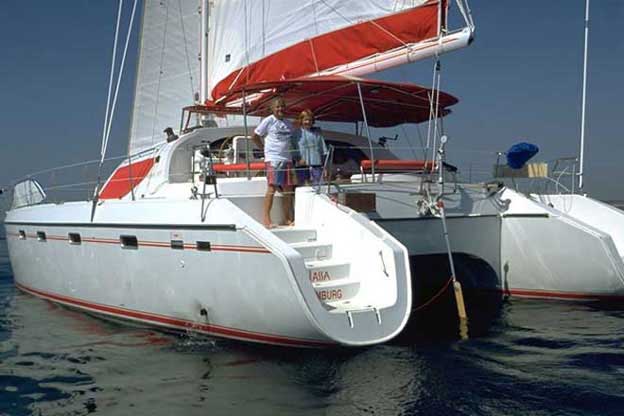 Another of our best-known sailors here in Germany, a circumnavigator, prolific author and one-time judge, bought a system from me in the usual manner. I installed it for him personally, which isn’t always part of the deal, and he then treated us to a meal of lobster, which is – sadly – very seldom part of any of the deals I do. Lobster is an excruciatingly expensive pleasure in our latitudes and I consequently remember this particular sale very fondly.
Another of our best-known sailors here in Germany, a circumnavigator, prolific author and one-time judge, bought a system from me in the usual manner. I installed it for him personally, which isn’t always part of the deal, and he then treated us to a meal of lobster, which is – sadly – very seldom part of any of the deals I do. Lobster is an excruciatingly expensive pleasure in our latitudes and I consequently remember this particular sale very fondly.
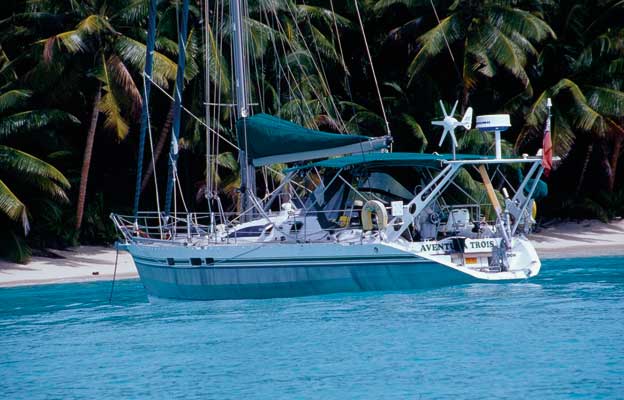 Looking further West, I once travelled to Le Havre to drill my magic four holes in a gleaming new OVNI. The boat and its owner became legends and I gained a friendship that has brought all manner of interesting twists and turns – none of them at all connected with sailing.
Looking further West, I once travelled to Le Havre to drill my magic four holes in a gleaming new OVNI. The boat and its owner became legends and I gained a friendship that has brought all manner of interesting twists and turns – none of them at all connected with sailing.
I am reminded also of a certain tram conductor from Austria. His tiny yacht was plastered with advertising from stem to stern, but he too had no hesitation in paying for his windvane.
I have long since lost count of the requests for sponsorship and promises to light up my brand, but I know that in all but a few exceptional cases in which something special caught my eye, my response has always been the same. Sometimes, I admit, I have fallen foul of the competing priorities and missed a trick by failing – or maybe just being unwilling – properly to weigh up the exchange. But that might be just as well.
Age could be a factor too: what hope for a bright young thing seeking sponsorship in exchange for no more than promises of the moon and the stars when the target of the pitch – 63 years old and motivated by the fun and enjoyment his work brings rather than the potential financial rewards – is already perfectly familiar with the heavenly bodies. It hardly helps, of course, that only one side stands to gain something it really wants from the deal. Something for nothing, that is …
Peter Foerthmann

































Suche eine geeignete WS für meine Senorita Helmsman – GMELINS WYK/FÖHR
WITH BEST REGARDS VOLKER
Peter, the words you write are SO true! I’ve made it a rule in life NEVER to lend – I only give. If the gift is returned then I may give again, if not, never. The pleasure to be gained from helping another on this hard road of life is ample reward for the gift. I, like you, choose those I help with extreme care so that I know that my gift WILL make a difference to them – and that’s what I buy with my money. As long as I still have enough to buy my Scotch I’m a happier man for it!
Only two so far have returned my gifts – one a very strictly ethical old German who hadn’t been able to save the money needed in time to visit his grandchildren and the other a poor working girl who’d been offered a place on a Hip-Hop team to visit Poland! That latter I let off after the first few repayments!